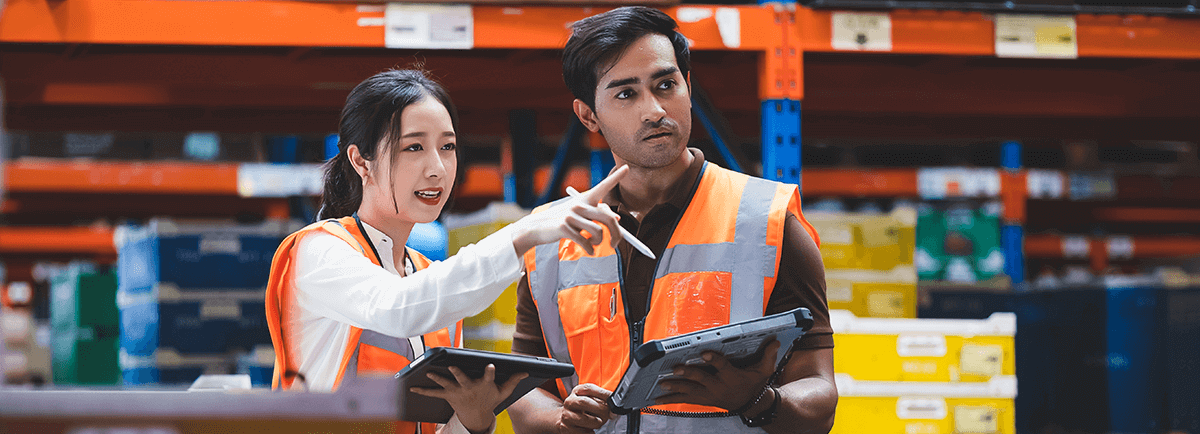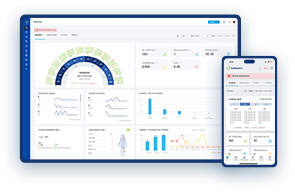
Empowering Employees: From Reactive to Proactive Safety
Are your employees merely reacting to safety incidents, or are they actively preventing them?
Shifting from a reactive to a proactive approach in workplace safety can make a world of difference. Not only does it reduce incidents, but it also fosters a culture where everyone feels responsible for maintaining a safe environment. Here’s how you can empower your employees to take proactive steps towards safety.
Understanding Reactive vs. Proactive Safety
Reactive safety is all about responding to incidents after they occur. While it’s essential to address and learn from these incidents, relying solely on a reactive approach means you’re always playing catch-up.
Proactive safety, on the other hand, involves identifying potential hazards and addressing them before they cause harm. It’s about prevention and continuous improvement.
1. Education and Training
Regular Training Sessions
Educate your employees about the importance of proactive safety through regular training sessions. Make these sessions engaging with interactive elements like quizzes, role-playing, and real-life scenarios.
Continuous Learning
Safety protocols and standards evolve. Encourage continuous learning to keep everyone updated. Share the latest safety news, updates, and best practices through newsletters or an internal portal.
2. Encouraging a Safety-First Culture
Lead by Example
Management should model the behavior they want to see. When leaders prioritize safety, it sets a standard for the entire organization.
Recognize and Reward
Celebrate proactive safety behaviors. Recognize individuals or teams who go the extra mile to prevent incidents. Rewards can be as simple as a shout-out in a meeting or as significant as a bonus.
3. Implementing Effective Communication Channels
Open Lines of Communication
Ensure there are open and clear lines of communication for reporting hazards and sharing safety ideas. Regular safety meetings and suggestion boxes can be effective.
Leverage Technology
Use technology to enhance communication. Safetymint’s notification and alert system, for example, keeps everyone informed about reported incidents and assigned actions. This real-time communication helps in addressing issues promptly.
4. Utilizing Technology and Data Analytics
Data-Driven Decisions
Harness the power of data analytics to identify trends and potential hazards. Safetymint’s safety dashboard and statistics section can provide valuable insights that help in making informed decisions.
Preventive Measures
Use the data to implement preventive measures. If analytics show a pattern of near-misses in a particular area, it’s a signal to take action before an actual incident occurs.
5. Encouraging Employee Involvement and Ownership
Inclusive Decision-Making
Involve employees in safety decisions. Form safety committees or task forces that include members from different departments. This inclusion fosters a sense of ownership and accountability.
Safety Champions
Identify and empower safety champions within your organization. These are individuals passionate about safety who can lead by example and inspire others.
6. Utilizing Custom Workflows
Tailored Safety Processes
Every organization is unique. Customize workflows to fit your specific safety needs. With Safetymint, you can create custom workflows and add digital signatures for approvals, ensuring that all safety processes are streamlined and effective.
7. Encouraging Reporting and Learning
Easy Reporting Mechanisms
Make it easy for employees to report incidents, observations, and near-misses. The simpler the process, the more likely they are to use it. Safetymint’s user-friendly interface ensures that anyone can report an issue quickly and effectively.
Learning from Past Incidents
Implement a “Lessons Learned” feature. This creates a knowledge repository where employees can learn from past incidents, understand what went wrong, and know how to prevent similar incidents in the future.
8. Tracking and Accountability
Action Tracking
Track all assigned actions to ensure they are completed. Safetymint’s actions section lets you monitor the progress of each task, ensuring accountability.
Regular Follow-Ups
Schedule regular follow-ups on reported issues and assigned actions. This ensures that nothing falls through the cracks and that all safety measures are properly implemented.
Conclusion: Transforming Your Safety Culture
Empowering employees to move from a reactive to a proactive approach in safety is not just about changing processes. It’s about transforming your organizational culture. With the right education, tools, and encouragement, you can create an environment where everyone takes an active role in maintaining safety.
By fostering a proactive safety culture, you not only prevent incidents but also create a workplace where employees feel valued and engaged. Safetymint can be a crucial partner in this journey, offering the tools and features needed to support proactive safety management.
Ready to transform your safety culture? Learn more about how Safetymint can help you empower your employees and enhance workplace safety.

Ramesh Nair is the Founder and Principal Partner of Niyati Technologies, the company behind Safetymint.
He’s a dedicated advocate for workplace safety. Ramesh firmly believes that every individual deserves to return home safely after a day’s work. Safetymint, the innovative safety management software, emerged from this conviction. It’s a platform designed to streamline safety management, empower safety professionals, and enhance safety in workplaces.
Through his blog, Ramesh shares insights, best practices, and innovative solutions for workplace safety. Visit his social media profiles to follow him for regular updates.




